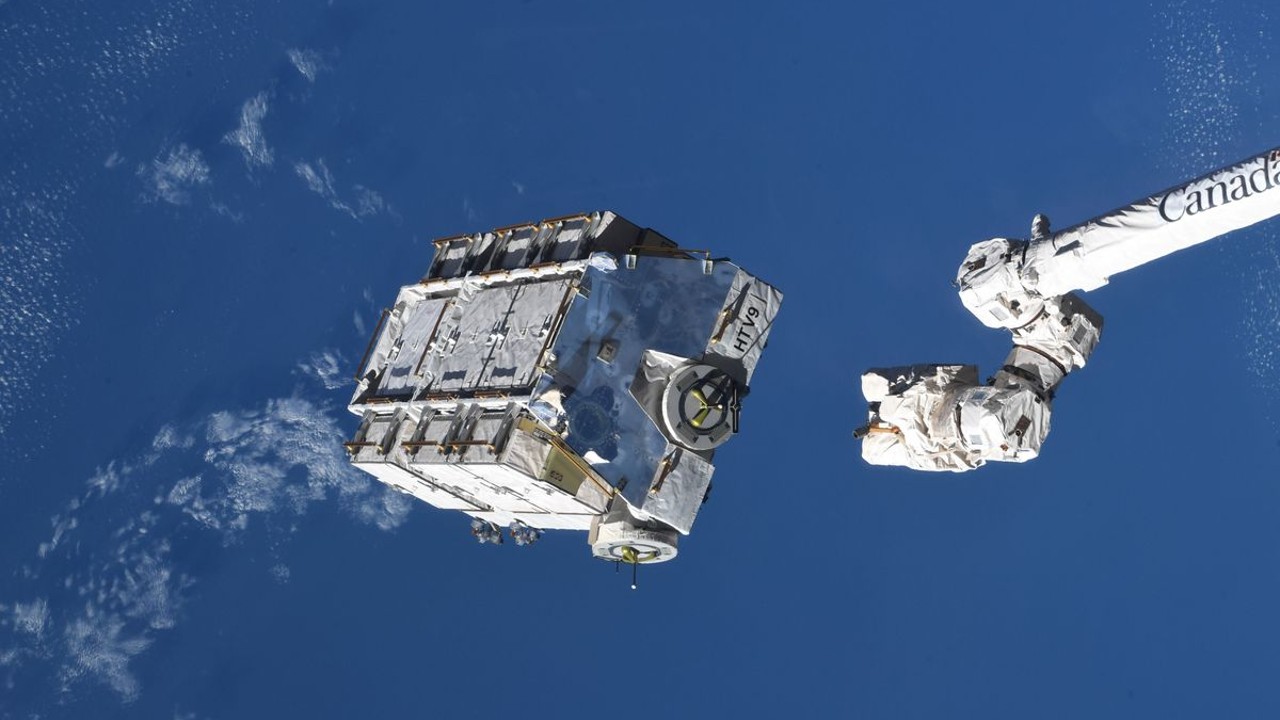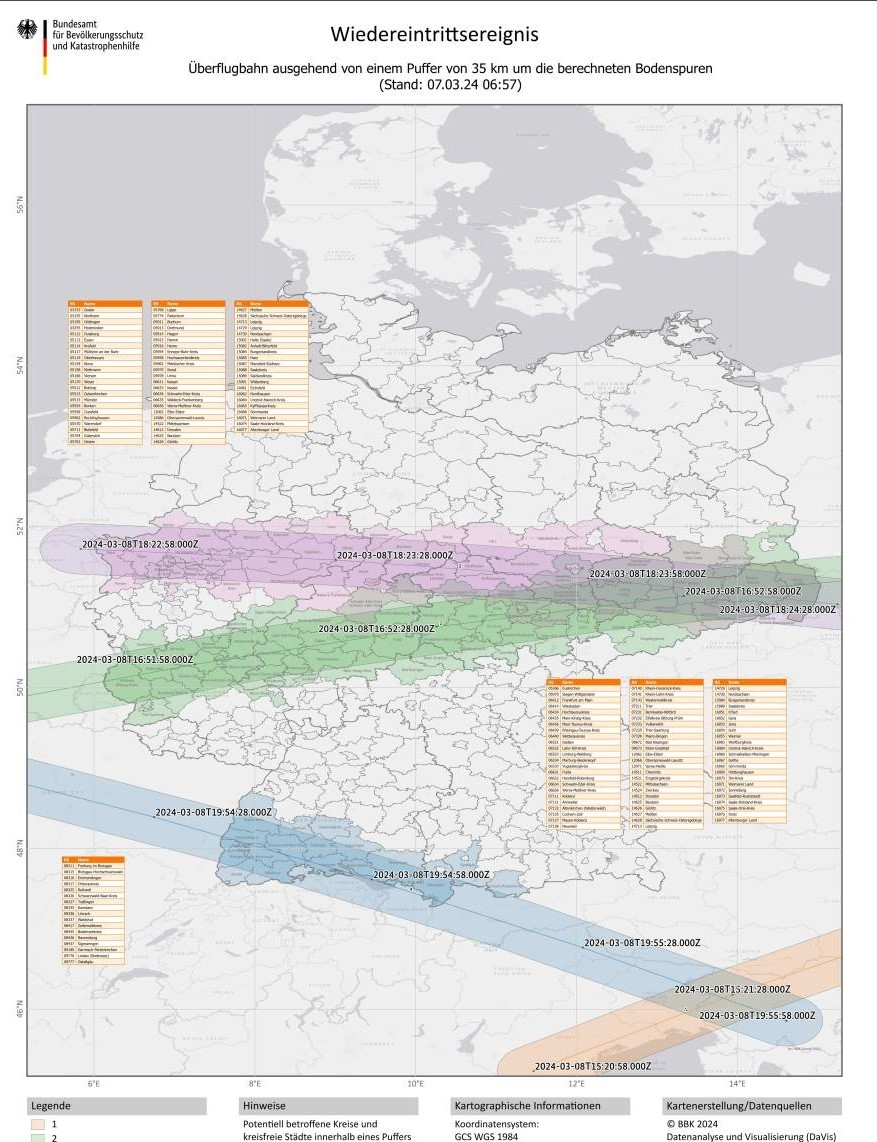
5,800 pounds of batteries tossed off the ISS in 2021 will fall to Earth today
"Luminous phenomena or the perception of a sonic boom are possible."

A nearly 3-ton leftover tossed overboard from the International Space Station is nearing its plunge toward Earth.
The multi-ton Exposed Pallet 9 (EP9) was jettisoned from the space station back in March 2021. At the time, it was reported to be the most massive object ever tossed overboard from the International Space Station. Disposing of used or unnecessary equipment in such a way is common practice aboard the space station, as the objects typically burn up harmlessly in Earth's atmosphere.
Ahead of EP9's reentry, the Federal Office for Civil Protection and Disaster Relief, National Warning Center 1 in Bonn, Germany issued this information:
"Between midday on March 8 and midday on March 9, a larger space object is expected to re-enter the Earth's atmosphere and possibly fragment," the translated statement explains. "The object is battery packs from the International Space Station (ISS). Luminous phenomena or the perception of a sonic boom are possible."
Related: Space station tosses 2.9-ton hunk of space junk overboard. It will stay in orbit for years.
The post from the warning center explains that "the probability of debris hitting Germany is considered to be very low. If the risk increases, you will receive new information."
According to a social media post by astronomer Jonathan McDowell of the Harvard–Smithsonian Center for Astrophysics, the battery should reenter between 7:30 a.m. ET (1230 GMT) on March 9 and 3:30 a.m. ET (0830 UTC) on March 9.
Get the Space.com Newsletter
Breaking space news, the latest updates on rocket launches, skywatching events and more!
Reentry of the EP-9 battery pallet jettisoned from ISS in 2021 is currently predicted (by Space Force) between 1230 UTC Mar 8 and 0830 UTC Mar 9. It will not totally burn up on reentry - about half a tonne of fragments will likely hit the Earth's surface.March 7, 2024
Germany's Federal Office for Civil Protection and Disaster Relief issued a map showing possible tracks of reentry for the battery pallet.

Ahead of its expected re-entry, satellite tracker Marco Langbroek caught a glimpse of the battery as it passed over the Netherlands, posting a video of it to X (formerly Twitter).
In a very clouded sky, I nevertheless managed to capture the #ISS EP Battery that will reenter tomorrow, as a bright and fast object.From Leiden, the Netherlands, WATEC 902H2S + 1.2/50 mm pic.twitter.com/baKDfT1wWUMarch 7, 2024
EP9 is loaded with old Nickel-Hydrogen batteries, NASA explained at the time it was jettisoned, also explaining that EP9 has the approximate mass of a large SUV and predicting it would re-enter Earth's atmosphere in two-to-four years.
The EP9 was delivered to the ISS via Japan's HTV-9 (Kountori 9) on May 20, 2020. The EP9 carried six Lithium-Ion battery Orbital Replacement Units (ORUs) which replaced existing ISS Nickel-Hydrogen batteries during an astronaut spacewalk.
Join our Space Forums to keep talking space on the latest missions, night sky and more! And if you have a news tip, correction or comment, let us know at: community@space.com.

Leonard David is an award-winning space journalist who has been reporting on space activities for more than 50 years. Currently writing as Space.com's Space Insider Columnist among his other projects, Leonard has authored numerous books on space exploration, Mars missions and more, with his latest being "Moon Rush: The New Space Race" published in 2019 by National Geographic. He also wrote "Mars: Our Future on the Red Planet" released in 2016 by National Geographic. Leonard has served as a correspondent for SpaceNews, Scientific American and Aerospace America for the AIAA. He has received many awards, including the first Ordway Award for Sustained Excellence in Spaceflight History in 2015 at the AAS Wernher von Braun Memorial Symposium. You can find out Leonard's latest project at his website and on Twitter.









